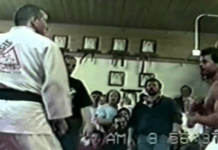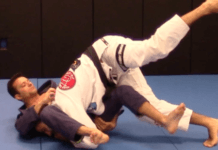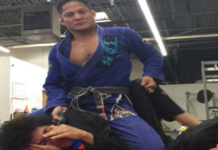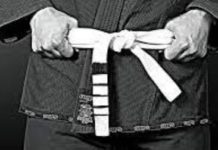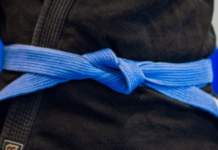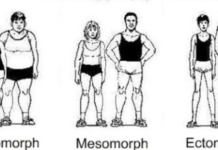To be fast in the right moment. That is a maybe decisive factor when it comes to BJJ competition. To recognize opponent action and have a proper reaction to that in a minimum time frame. What is standing behind those explosive reactions, throws, counter-attacks? Surely, plyometric type of training will give you a few answers about that. Find out the plyometric training roots, where was it used before and where is it used today. Also, grab some plyometrics for BJJ advice and implement them in your training routine to get the very best results, once when you are in competition.
Plyometrics Roots
The earliest mention of plyometrics come from the, you guess it, Russia. Reason to take a closer look into the plyometric type of training was Russian high jumpers and triple jumpers result in the late 60s. They were dominant in those disciplines and they were using early variations of today’s plyometric training. When it comes to the word itself, it is forged from Latin words plyo and metric which means measurable increase. First modern foundations of plyometrics can be found in the late 70s from professor Verkosanski and researchers around him. As the main purpose of this training method, they underlined increase in explosiveness and increases in reactive abilities of the muscle-tendon system. Those explosive movements can be used in a sprint, throws, jumps, and kicks. By definition, everything that combines the power and speed of the movement is considered as plyometric exercise.
Plyometrics workout for BJJ
This type of training is often considered as a dominantly jumping type of training. Jumping and variations of jumps are just one segment of plyometrics. Roughly, you can divide the upper and lower body region in plyometric exercises.
As I already said, this method combines the strength and speed of movement. The key foundation which BJJ practitioners have to poses before coming to plyometric work is a respectable level of strength which will be converted to explosive movements. As a good starting measures of preparedness for plyometrics, you can take 1.5 times of your body mass in squat exercise or 1.5 times in bench press for practicioners that are under 100 kilograms of body mass or 5 straight clapping push ups in a row. Also, you should take 4-5 weeks of strength and speed training to build a nice foundation for further challenges.
Constructing the Plyometrics routine
Once you build a proper foundation, it is time to construct a plyometric training for BJJ. When it comes to microcyclus, in most cases it is a time frame of one week. I suggest 2-3 BJJ plyometrics per one microcyclus. The rest between the two different training should be 24-48 hours, deepening on your condition level and your personal needs. Also, you should avoid doing maximal strength routines once when you start with plyometrics for BJJ. This method is very stressful to your body and proper rest is needed to avoid injuries and over-training states. You should give enough time to your central neural system (CNS) to recover and to allow your body to enter the super-compensation process. CNS development is a main reason why this method is not recommend for practitioners that have not passed the puberty phase. You can use it but not in an intensive and aggressive approach.
Lower body plyometric for BJJ
When it comes to lower body plyometrics, most of the athletes use jumping and sprinting exercises to develop explosiveness. Some specific kicking drills can be found in martial arts. Exercises can be done without any equipment. More advanced practitioners use specific training equipment such as free weights, weighted vets, parachutes. When it comes to total volume you should do in one training, it varys a lot. It is a condition level defendant. Also, in the different part of year numbers are different.
| NUMBER OF JUMPS IN PLYOMETRIC TRAINING | ||||
| TRAINING LEVEL | ||||
| BEGGINER | MIDDLE | ADVANCED | JUMP INTENSITY | |
| OUT OF THE SEASON | 40-60 | 60-80 | 80-120 |
LOW – MODERATE |
| PRE-SEASON | 80-120 | 120-150 | 150-250 |
MODERATE – HIGH |
|
SEASON
|
SPORT SPECIFIC |
MODERATE |
||
| SEASON FINAL |
REST |
|||
TABLE 1. Example of BJJ psychometric jumps training volume
Some bodyweight plyometrics for BJJ can be found in the following link:
For more advanced practitioners, there is a informative video on the following link:
Upper body plyometrics for BJJ
All of the beginners in this training method can start with the bodyweight explosive exercises or with minimal equipment such as medicine ball.
More advanced practicioners can implement different kidy of equipment in their plyometric training such as slam balls, medicine balls and different types of elastic bands.
Be sure to limit repetitions in a plyometric repetition interval. Remember that you are not working on your endurance and that sometimes more is less. You are looking for explosive movements in which you change eccentric and concentric muscle contraction in a minimum possible time.
Few tips in the end
Be sure to optimally prepare yourself for this exhausting training method. Take a few weeks of time to develop a good foundation. It will help you successfully go through plyometric and explosive times of your training. Also, be sure to take a proper rest in training and between BJJ plyometrics training. Start slowly and progress. Body is machine that remembers. Give it proper stress and give it a proper rest. After high quality BJJ plyometric training phase, i am sure that you will feel benefits once you step on the mat.
Check also:



